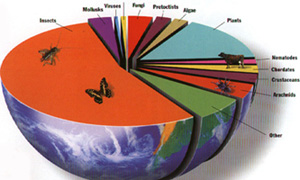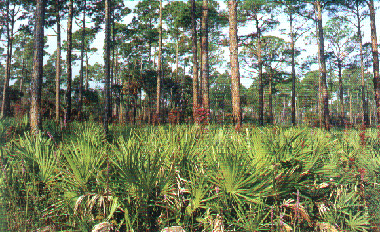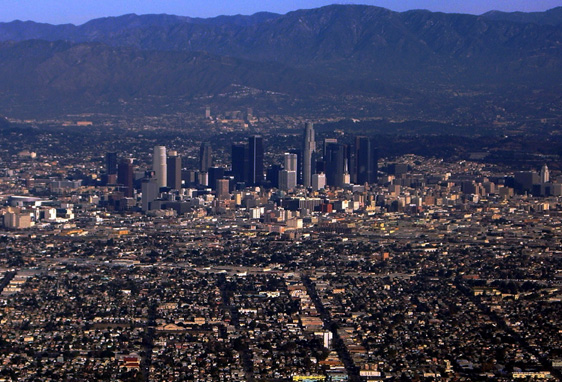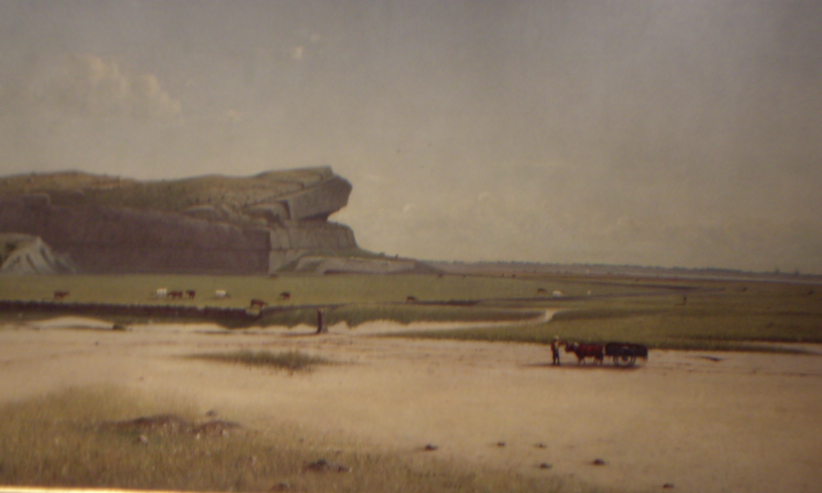 The world turned inside out.
The world turned inside out. 
Take a last look . . . look well at the meadows, wooded draws, and stands of pine. . . . and fix them in your memory. . . . this is about the last chance you will have."
William Whyte, 1959.
health | anxiety | losses | legal status | viewpoint | meaning
Pine and saw palmetto Flatwoods, Florida. photo JVS, 2004
"A large number of Americans became concerned about the transformation of the landscape."
p. 119.
1950-1968, was the dawn of a new sensibility based on a profound sense of loss.
"In a number of ways the effort to to preserve open space was also a critical stage in the evolution of the modern environmental movement,"
p. 120.
- What Stewart Udall, Secretary of Interior (under John F. Kennedy) called the third wave of the conservation movement.
- What educator and advocate Raymond Dasmann called Environmental Conservation.
- What Roderick Nash called "the gospel of ecology."
"throughout the 1950s, the nation's cities and suburbs, took a million more acres every year –a territory larger than Rhode Island."
p. 120.
The percent of land that was urban and suburban in the US doubled between 1950 to 1970 due to the boom in suburban dwellings.
p. 120.
"Thus the new metropolitan landscape had fewer spaces left open because of terrain."
p. 120.
" a new kind of monotony."
p. 121.
"To prepare the land for construction, builders often bulldozed all vegetation, leveled all rises and filled or channeled all streams."
p. 121.
". . .the new landscape had little variety.
Families with yards would not need parks."
p. 122.
Eco settlement study: what is it?
health | anxiety | losses | legal status | viewpoint | meaning
"Suburban Sprawl Can Be Bad for Your Health, Study Finds
“Suburban sprawl is linked to the prevalence of many chronic health ailments,” said Roland Sturm, a RAND economist and coauthor of a new study that for the first time analyzes suburban sprawl and a broad range of chronic health conditions."
The open space activists made three kinds of arguments."
- Conservation is ignored with serious consequences.
- Aesthetic or amenity values are sacrificed needlessly.
- Outdoor Recreation is traded in exchange for cheaper housing.
p. 123.
health | anxiety | losses | legal status | viewpoint | meaning
"anxiety about the social consequences of a profound demographic change -- if the city continued to swallow up the country, would Americans forget the 'agrarian virtues' that made the nation great?"
p. 123.
"Open space was necessary to maintain 'ecological balance' "
pp. 124.
Do compare your home to the post-war model home.
Wetlands and marshes: an orgy of filling and drainage.
"But the new appreciation of wetlands contributed the evolving environmental critique of the building industry."
p, 155.
In the 1950s and 1960s, America seemed to have abundant wetlands to fill. Yet "wetlands played a vital role in the metropolitan hydrological system."
p. 156.
"To many people, however the productivity of the coastal marsh was most important as a kind of metaphor. The new ecological understanding countered the old image of wetlands--the swamp as wasteland."
p. 161.
health | anxiety | losses | legal status | viewpoint | meaning
Wetlands, the key to flood control was often an extensive marsh to absorb the increase water flow.
"A natural reciprocal nurturing of ocean and earth creates abundant wildlife in coastal wetlands. Here, salt and fresh water flow together in tidal marshes, creating rare shorelines of unsurpassed natural fertility by converting solar energy into food. Swelling tidal fluctuations recycle vital nutrients that encourage rapid vegetation growth followed by quick decay..... Both native and migratory wildlife thrive on the tide-mulched marsh grass fields."
J. Siry, Marshes of the Ocean Shore.
Fisheries that are nourished directly and indirectly by estuaries are:
- oysters
- clams
- crabs
- shrimp
- mussels
- lobsters
- salmon
- striped bass
- shad
"By analogy, ' Odum wrote in 1961, ' we could think of the marshes, and probably also the mud and sand flats, as the great 'wheat fields' which fed the teeming 'cities' of fish and other organisms living in the creeks and sounds."
pp. 160-161.
"The 1954 Fish and Wildlife Survey of wetland losses suggested that the urban northeast might soon have almost no habitat for waterfowl. . . . particularly acute in Long Island."
pp. 162-163.
health | anxiety | losses | legal status | viewpoint | meaning
Book
"The postwar decades thus suggest the weakness of consumer driven environmentalism. . . .the nation's consumers were either unwilling or unable to conserve energy," open space, sensitive lands such as steep hillside slopes and wetlands, waterways or even to prevent water pollution.
p. 86-188.
Tidal marshes had long been common property and customarily were used as common land because they were treated legally as sovereign lands belonging to all the people and held in trust for the right of public access by the states.
The Marshes of Newport , An 1860s depiction of common tide lands as highways and grazing pasturage.
By 1978 "Ten years later, at least 15 states and 1000 local governments had passed regulations to protect wetlands."
p. 165.
health | anxiety | losses | legal status | viewpoint | meaning
Essay
The Bulldozer in the Countryside carefully argues that "The growing regard for natural processes in the 1950s and 1960s also led to new thinking about the balance between public and private interests."
He notes that ". . .the critics of building on sensitive lands ultimately sought to restrict the use of private property," and "thus planted the seeds for future controversies over property rights."
p. 188.
1967 Conference served "as a bridge the past and the future."
p. 189.
"In truth, the nation's leaders were not prepared to crusade against the destructiveness of suburban sprawl. The federal government had contributed to the problem in several ways, from encouraging the purchase of single-family homes to building the interstate highway system, and a number of government programs still stood in the way of reform."
p. 190.
"When these are linked to the loss of open space, a rejection of conservation as practiced before the war emerged and propelled the adoption of an eco-centric ethic that spawned both 'environmentalism' and anti-environmental movements such as the Sage Brush Rebellion, championed by Governor and later President Ronald Reagan.
He being the first President to end the broad bipartisan agreement on conservation.
The conservation movement splintered by rising energy prices in the 1970s, was undone in the 1980s, by attacking federal agencies whose mission it was to protect air, water, wildlife and soil resources.
![]()
Biological Trends in the United States, an annotated guide.
Aldo Leopold and a re-envisioning of the values of landscape.
Ian McHarg and the reaction of planners against sprawl.
Merchant's Chronology 1640-1992.
health | anxiety | losses | legal status | viewpoint | meaning
J. Siry
28 November 2007









